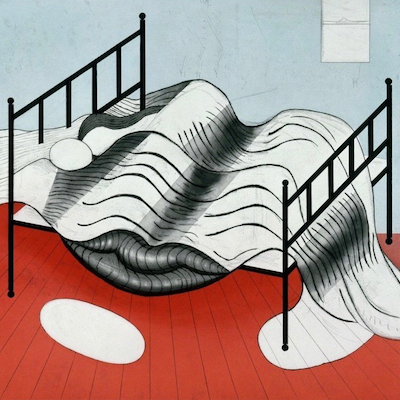
Details
Artist
Styles
Hand-signed, numbered - Published by Edition Copenhagen, Denmark // Georg Jiri Dokoupil's 'Blue Nude' is a 1998 lithograph that presents a minimalist yet striking portrayal of the human form. The image features a simplified, abstracted nude figure, rendered in soft shades of blue with clean, flowing black outlines. The figure is seated, with arms crossed, creating a sense of quiet introspection and calm. Dokoupil’s use of negative space and a limited color palette adds to the artwork’s serene and contemplative nature. The smooth, fluid lines of the body echo classical themes of the nude in art while maintaining a distinctly modern, abstract approach, making this piece both timeless and contemporary.
Blue Nude, 1998
form
Medium
Size
38 x 27 cm
- Inches
- Centimeters
Edition
Price
- USD
- EUR
- GBP
Details
Artist
Styles
Hand-signed, numbered - Published by Edition Copenhagen, Denmark // Georg Jiri Dokoupil's 'Blue Nude' is a 1998 lithograph that presents a minimalist yet striking portrayal of the human form. The image features a simplified, abstracted nude figure, rendered in soft shades of blue with clean, flowing black outlines. The figure is seated, with arms crossed, creating a sense of quiet introspection and calm. Dokoupil’s use of negative space and a limited color palette adds to the artwork’s serene and contemplative nature. The smooth, fluid lines of the body echo classical themes of the nude in art while maintaining a distinctly modern, abstract approach, making this piece both timeless and contemporary.
- Recently Added
- Price (low-high )
- Price (high-low )
- Year (low-high )
- Year (high-low )
What is Postmodernism?
Postmodernism is an art movement that emerged as a reaction against authority and traditional boundaries, seeking to blur the lines between art and everyday life. It aimed to bridge the gap between the cultural elite and the general public by embracing eclectic mixtures of earlier conventions and styles. Postmodernist art often challenges established norms and celebrates diversity, irony, and pastiche, making it a movement that reflects the complexities of contemporary culture.














